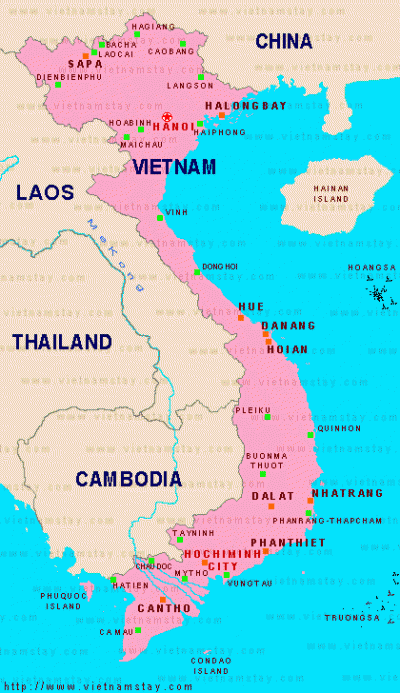
Memories of Empire: Remembering the Fall of Saigon
Binoy Kampmark

Despite sharing the same diplomatic table as the United States, and forging ahead with trade agreements, Vietnam still remembers. Remembers, that is, those “countless barbarous crimes,” as the country’s prime minister calls them, committed by the United States during the long wars of the 1960s and 1970s. On April 30, 1975, Saigon was stricken by scenes of evacuation and panic. “Our homeland,” explained Nguyen Tan Dung, “had to undergo extremely serious challenges.”
Both countries provided mirrors of violent change, a form of toxic exchange that seemed share more with disease than nutrition. A distant country that was supposedly off the radar of American homes became a round-the-clock transmission feast of gore and depravity. Then came the battlefield traumas and the counter-cultural response.
The words from President Gerald R. Ford a week before the fall of Saigon before an audience at Tulane University spoke of America regaining “the sense of pride that existed before Vietnam, but it cannot be achieved by refighting a war that is finished as far as America is concerned.” The crowds began gathering for the evacuation – 130,000 Vietnamese leaving the South that April, a projection that made State Department predictions woefully inadequate. Bing Crosby’s White Christmas did the rounds on radio on April 29, triggering the airlift evacuation “Operation Frequent Wind”.
An all to quiet theme behind the commemorations has been one of waste. Waste of life, of resources. In Tim O’Brien’s words on the fall of Saigon and a slew of images, it was “the waste of it all. The dead, the wounded, the money, the psychic energy and the moral energy […] just everything.” Poor planning for the evacuation also saw a prolonging of suffering – the separation of families, the special, God-like power of who would join in the evacuation and who could not. “We separated families in a wink,” remembers Frank Snepp, one of the CIA’s top strategists working in Vietnam, “because we hadn’t planned adequately.”
But a response to defeat and trauma tends to be that of the reassuring fairy tale, the inventive scribe who finds better ways of reimagining horror. “Think of them,” suggests Bill Moyers, “as silver-lining tributes to good intentions and last-ditch heroism that may come in handy in the years ahead.”[1] Hence the fall of Saigon being deemed humanitarian and worthy of remembrance in its tragic meter. American aggression, noted Christian Appy, was given a different pigmentation: that of “a tragic humanitarian rescue mission.”[2]
The very idea of defeat that somehow masquerades as honourable exit started the show. The peace accords of 1973 served as a masking agent. The brutality began to disappear from the screens beaming into the homes. But scores were going to be settled, and vacillation before the advancing North Vietnamese forces would see compromising records fall into the hands of the victors. The CIA, as tends to be the usual pattern, could not be trusted to be reliable on this one – those on their payroll were found in undestroyed records, captured, sent for re-education, be it through ideological patching up or traditional execution.
As Moyers notes, a response of selective remembrance reverberates in the halls of quaint, if somewhat dangerous delusion. Spin doctors with dusters and gloves have gone back into the archives, reshaping defeats as strategic wind downs and “exists”. America, after all, cannot lose, and certainly can’t be seen to sport a broken nose. Corrupt regimes installed by the grace of superpowers become mechanisms of stability. Gambles pay off even when they are ignominious failures. That is the modern legacy of Vietnam, visible in Iraq, Afghanistan and Libya.
Euphemistic bureaucracy thrived in South Vietnam, and has given birth to some terrifying monsters. The language of “body counts” and “free fire zones” entailing practical desserts have not lost their appeal in any shape or form. They have found shape in the broader objectives of the modern American Republic.
Vietnam also provided another pertinent reminder in the context of refugees. The first makeover of anniversary thought was to neglect the enormous internal displacement created by US operations – those arising from the “strategic hamlet program” designed to “pacify” local populations. In a technique all too reminiscent of British strategy towards the Boers in South Africa, millions were forced off their land, herded, encamped. “I never flew refugees back in,” remembers flight chief Jim Soular. “I always flew them out.”
Refugees arising from the conflict chose the sea as a means of passage. They were the “boat people” snaking their way in danger via the Mekong and the South China Sea to make it to countries like Australia. Many were ethnic Chinese that formed the bulk of those expelled by the Vietnamese government in 1979. Government policy to them from Australia, an ally of the southern government, resisted cultural and racial angst. There was no Pacific or extra-territorial repulsion, despite the fear in some circles that white purity was being muddied. But tens of thousands would languish for years in refugee camps in Southeast Asia.
Even now, as the fall of South Vietnam is being remembered, it is providing moments of selective reflection. Whatever happens at these points, the strategists and the dream factory merchants should be kept away from the planning rooms about military interventions. Any reference to Vietnam as precedent is bound to be foolish and misguided, because the wrong questions are bound to be asked.
Dr. Binoy Kampmark was a Commonwealth Scholar at Selwyn College, Cambridge. He lectures at RMIT University, Melbourne. Email: bkampmark@gmail.com
Notes:
[1] http://billmoyers.com/2015/04/
[2] http://www.huffingtonpost.com/
